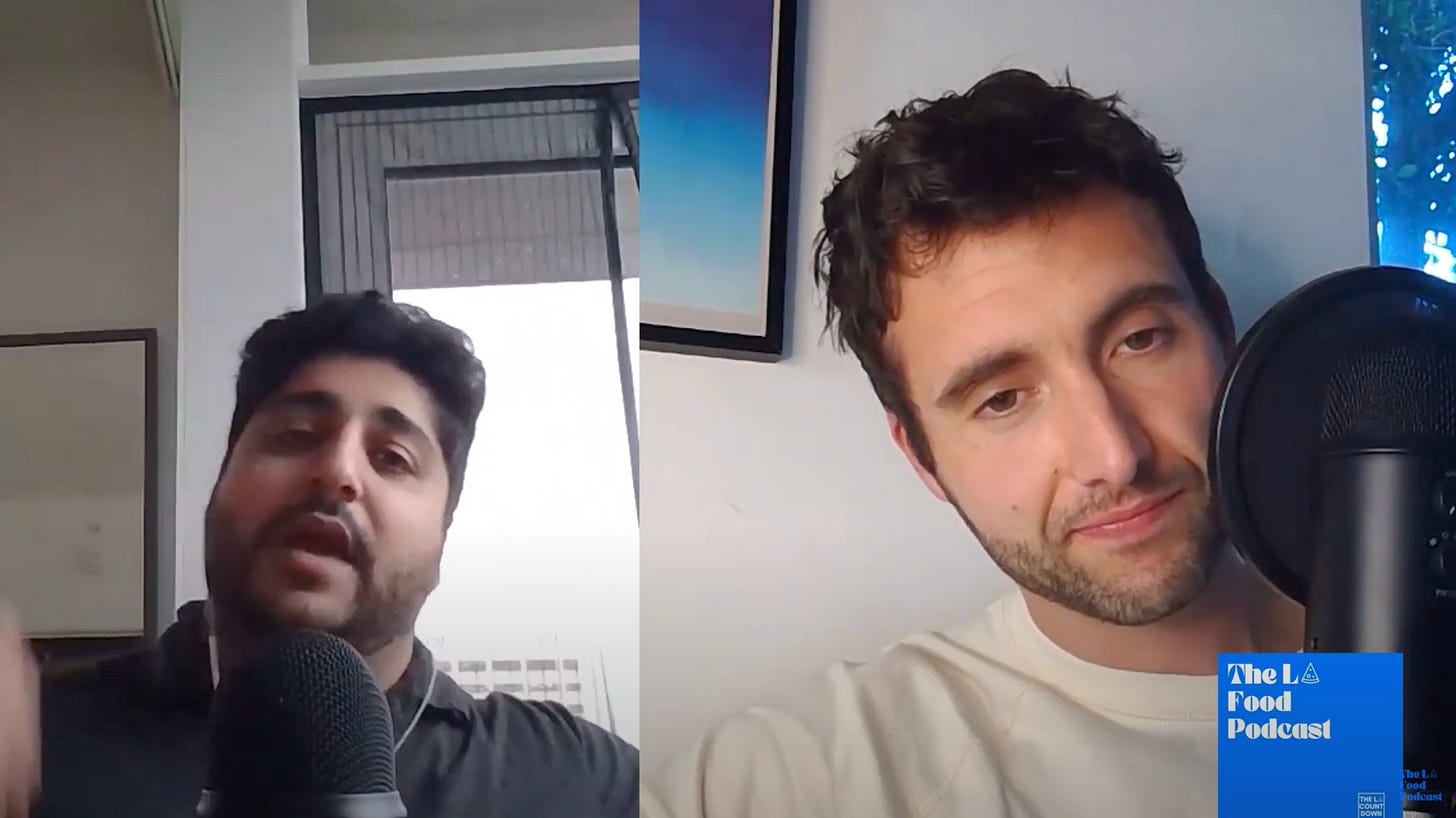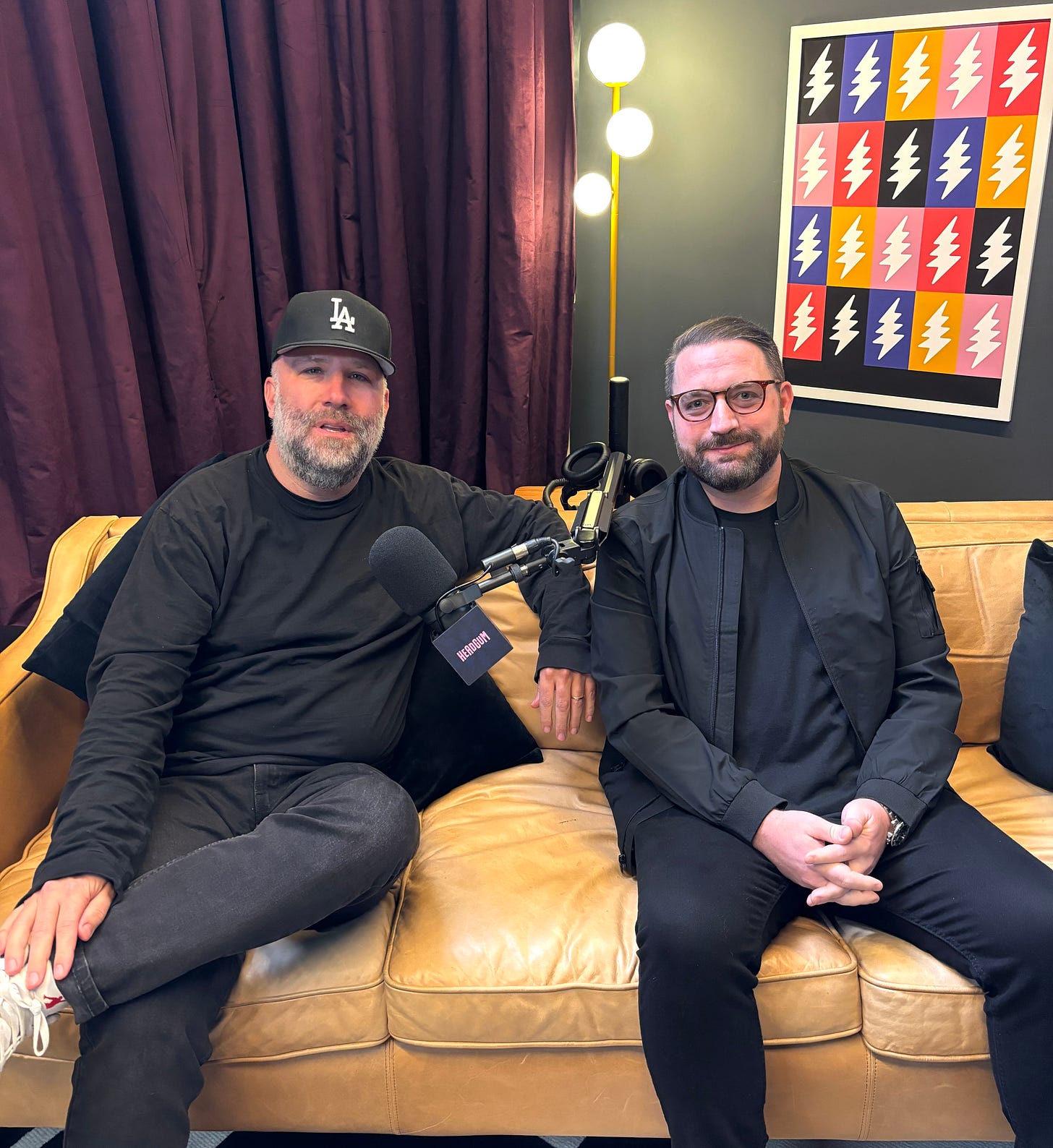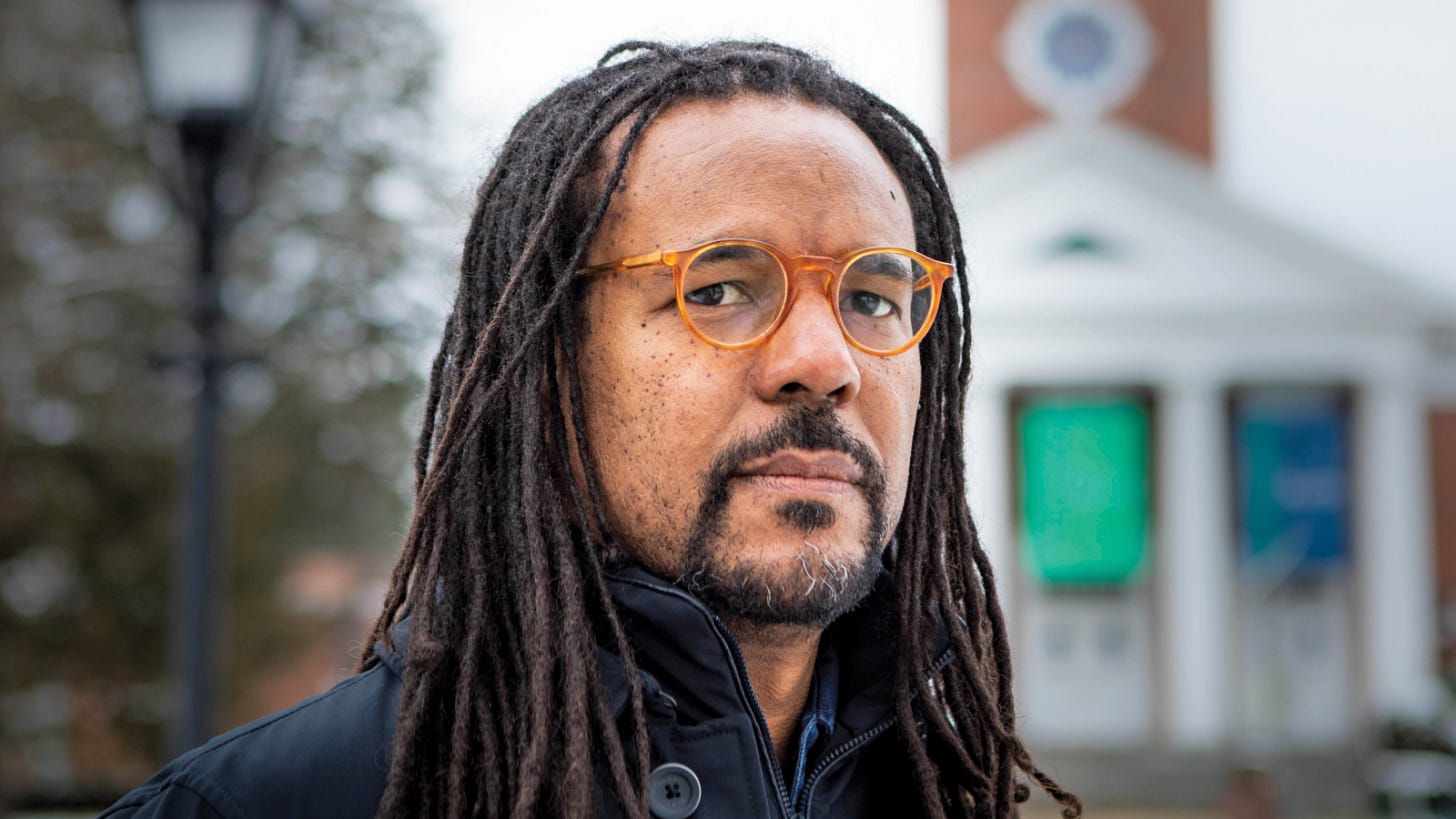The Los Angeles Food Podcast Scene Is Interesting, Exciting, and Beefy
Unlike New York, San Francisco, and other major food cities, LA has a consistent lineup of podcasters willing to go the distance. I love it.
Jordan Okun, host of the long-running Air Jordan podcast, had a recent bit about taking over the Los Angeles Times Food section. “Patrick Soon, you throw me ten home games a year for the Lakers.… I only need two seats, Pat, but don’t cheap out on me. They need to be courtside.” It’s his ask for payment for taking over a section that Jordan and his cohost, Max Shapiro, have openly criticized for years. “You put me in charge of the LA Times Food section, and it’s the most clicked, most interesting, best food section in the country in six months,” says Okun, a Los Angeles native, in a booming bravado that hints at East Coast roots (a topic of discussion on the same episode).
I’ve dipped in and out of Air Jordan for several years now and truly love what they do. Jordan, who works in entertainment, and Max, an accomplished real estate agent, former pop-up chef, and high school hoops standout (UCLA and UNLV both recruited him before a knee injury sidelined the dream), are real-life friends, dining companions, and Michelin-starred shit-talkers. This all shines through in their weekly episodes that have attracted a heavy industry following. Several of my friends in media, PR, and the chef world are religious listeners, and Jordan’s work with reservation app Dorsia confirms that the streets are listening.
The special sauce in a great Air Jordan episode is a balance between Jordan’s informed quick takes (Ètra is good; tavern-style pizza is better crunchy; Saffy’s to Found Oyster is the best LA bang-bang; food media can get fucked) and Max’s deep knowledge of an impressive wiki’s worth of key food topics (Japanese omakase, European bubbles, Chef’s Table restaurants—the actual food in the actual restaurants, not the food played on TV). Jordan will rant; Max will correct and counterpoint. Both of them clearly know their shit and have near-endless means (and plugs) to support Los Angeles restaurants. They are critical (“Hillstone has some of the worst glassware in the game,” Max wisely notes), but the vibe is overwhelmingly pro-restaurant. To note, they raised significant money for wildfire relief through a grassroots Venmo campaign.
One of my favorite recent episodes was an interview with Chef’s Table creator David Gelb. After pleasantries and Hollywood shop talk, things turned really awkward when Max listed his five least favorite Chef’s Table restaurants while Gelb was forced to listen. It appears there was no warning given. Osteria Francescana has long been the bee in Max’s bonnet, and Gelb was left twisting in the wind when it topped the list. Podcasting gold.
The podcast’s scorched-earth approach to food media does give me pause, and I’ve found myself actually hitting pause during personal attacks on my peers at the Los Angeles Times, Eater LA, The Infatuation, and others covering the scene. Like with David Chang’s continued obsession with “fixing food media” on his own podcast, the bruising feels both tired and like it’s coming from an amateur mindset regarding what goes into the actual creation of restaurant reviews and features at scale.
Chang, Okun, and Shapiro may have bold day-one ideas about how restaurants should be assessed for public consumption. But anyone who has managed an editorial calendar or logged into WordPress on deadline at 11 p.m. on a cold February night (dark days for restaurant news and excitement) knows that putting the work out day after day is a grind. That visiting multiple restaurants, consuming thousands on calories and listening to hours of bad Drill, or the same dozen Hard Bop songs on loop through muffled speakers, without writing a single word because the restaurants are not good or bad (definitively “mid”), is the reality of restaurant reviewing.
I’ll circle back to this in the future, so as not to distract from the original point that Air Jordan is an incredibly entertaining and well-informed show. They love LA, from San Pedro to the San Gabriel Valley (with a slight Westside bias), and there is nothing like it in New York. It’s bold, it moves quickly, and it avoids the fate of most food podcast programming—the hosts are allergic to boring. I had a great talk with the Air Jordan crew on This Is TASTE back in early 2024.
Similarly, The LA Food Podcast has emerged as a singular voice covering the Los Angeles food scene. In 2021, the industrious Luca Servodio launched the social media account The LA Countdown to cover Los Angeles from an endurance crawl point of view. He started by visiting 100 Los Angeles pizza spots in 365 days, followed by 100 taquerias in 2022, 100 sandwich places in 2023, and 100 iconic LA noodle dishes in 2024. Burgers are the project for 2025, and this alone is very cool and respectable. Yet there was even more work to do, and Luca and a friend who goes by “Father Sal” (born Salman Akhtar) launched a podcast in 2023 that has built momentum as a great follow-up course for Air Jordan.
First, a bit of what I know about Luca. The guy is tireless, and his output is really impressive, with Reels and TikToks supplementing the weekly show. Second, Luca cares about food writing and reads all the posts (and listens to all the pods). The show is formatted as a rundown of the week’s big stories—more scripted than Air Jordan—and drops in commentary about big topics like the recent Thomas Keller affair, reviving Santa Monica’s Third Street Promenade, and decoding the recent reader survey from The Angel. Luca and Sal close the show with the recurring segment Chef’s Kiss, Big Miss, which offers the hosts some rope to comment on topics (and possibly hang themselves). In a recent episode, they covered Evan Funke’s new Roman-style bar, Bill Esparza taking on Stanley Tucci (via Bill’s new podcast), and, well, my own work at TASTE. (I fared okay this time.)
I really like the format of The LA Food Podcast—it’s quick and well-researched, and Luca cares deeply about highlighting exciting restaurants around Los Angeles, with a healthy dose of criticism thrown in. It’s essentially the podcast version of Threads/X restaurant discourse, and, along with Air Jordan, there is nothing like it covering New York City, San Francisco, and most other great US food cities.
Now onto the beef. Or perceived beef? I am not close enough to these two shows to know all the details, and I don’t get out to LA as much as I would like, so I’m not hanging out at Bar Benjamin or Baby Bistro to get the gossip. But it seems there may be something going on between these two podcasts. Supposedly Jordan took to Air Jordan a year ago to address shots called by The LA Food Podcast? I honestly don’t know, and I don’t really care. Both shows are winning the game, offering creative approaches to covering what is clearly the greatest restaurant city in America at the moment, and during a time when the old guard is consistently playing catch-up. I am beyond a podcast bull. I’m a Chianina bull for food podcasts that do more than tell listeners how to cook with nutritional yeast in hushed tones. And these two shows wouldn’t touch popcorn seasoning in their weekly episodes with a 100-foot salami.
The Extraordinary Colson Whitehead
For the last year, I have been on a Colson Whitehead novels run, and he’s without question my favorite living writer today. It didn’t start great, our relationship. I read 2008’s Apex Hides the Hurt and nearly put it down. It was slow. But in short sequence, I read his last four books: Crook Manifesto, Harlem Shuffle, The Nickel Boys, and The Underground Railroad. For those last two, I’ll just say that the arthouse film and the Amazon series don’t do the work any justice. Each novel is brutal in telling stories of the Black experience in America, separated by centuries but tied together by depictions of racism and devastation. Whitehead can write! The prose is extraordinary in its grounding in well-researched real events, but with the finesse of somebody who has the deep imagination and appetite to dip into magical realism from time to time.
Harlem Shuffle and its sequel (in a planned trilogy) are crime novels set in the Harlem underground of the 1960s and ’70s. What a time to (not) be alive in New York City. There’s murder, gangsters, great modernist furniture, and lots of blood and betrayal. I stayed up late reading these novels—you know the feeling. I am going to slowly work through the rest of the books, with 2009’s Sag Harbor next on my list. I’d love to speak with Colson about his work someday—and yes, there is plenty of food in his writing. In Crook Manifesto, there’s a brilliant scene that involves rival fried chicken restaurants, a recipe, and a safecracker. I have questions. And the chicken sounds heavenly.







Two of my obsessions food and books! I love Taste